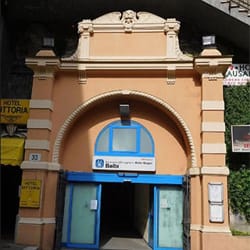Yesterday, April 7, in the Culture section of the Sunday edition of ABC, a Spanish newspaper with nationwide circulation, an article with the following headline appeared:
The movie-like reunion between a Prado Museum visitor and El Escorial’s Virgin Mary that happened at the museum this week.
The Murillo painting that saved a Japanese woman’s life
It begins with a question about what is useful about art, and the anecdote is introduced as one of the answers.
This week, on April 4, a Japanese woman who visited Madrid's Prado Museum, passing quickly through the rooms where great treasures such as the works of Velázquez and El Greco are on display, made her way directly to the exhibition room of a 17th-century Spanish religious painter named Murillo. That is where she expected to have her reunion with “The Immaculate Conception of El Escorial,” a work based on the Virgin Mary.

“The Immaculate Conception of El Escorial”. Photo courtesy of Prado Museum website.
13 years ago, in 2006, at a time when she was living in despair and was about to lose hope, she saw this work at a Prado Museum Exhibit being held at the Osaka City Museum of Fine Arts. Upon seeing it, she realized, "Life is worth living in a world where things of such beauty exist." The work gave her the courage to continue living; in other words, it saved her life.
However, she couldn't find it in the exhibition room, causing her to break down and cry. The security guards were at a loss and could do little more than just watch over her. At that moment, Museum Director Miguel Falomir, who was making his rounds to observe the visitors as is his habit, happened to pass by. At first, language issues prevented effective communication, but he at least knew she was Japanese, so he asked the help of Restoration Department staff member Minako Wada, the only Japanese staff member at the museum, and he was finally able to grasp the situation.
The work had been loaned out to the Museum of Fine Arts in Seville for their Murillo’s 4th Centenary Exhibition, returned to Prado at the end of March, but was not put back out on display in its regular room as its frame was undergoing maintenance in the museum's preservation and restoration studio. Director Falomir decided to grant her a special exception, take her to the studio, and grant her wish of an up-close encounter with the work in the most literal sense. Upon being reunited with the painting, she wept tears of joy. The merging of one coincidence after another, from the kindness of the director to the presence of the Japanese staff, this fateful behind-the-scenes reunion immediately made me think of phrases such as "the benevolence of the Virgin Mary" and "grace".
I feel as though, we were taught that even one painting or one exhibition has the power to save people's lives and change them.
Bartolomé Esteban Murillo (born in Seville 1618, died in Seville 1682)






























































